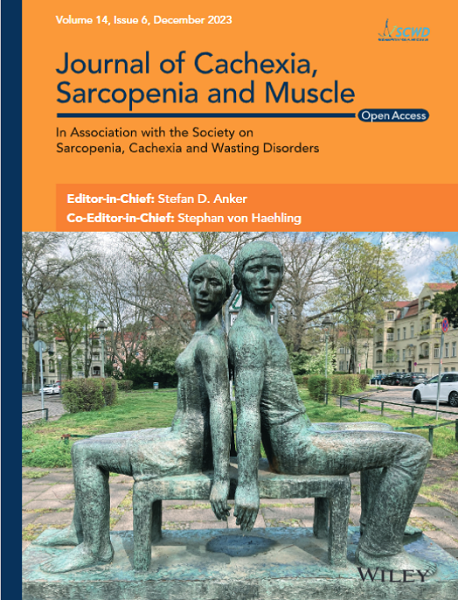Plant and Animal Protein Intake and Transitions From Multimorbidity to Frailty and Mortality in Older Adults
Abstract
Background
Multimorbidity is the most common chronic condition experienced among older adults. It is unknown which amount and source of protein influences the development of frailty and mortality in patients with multimorbidity. We aimed to examine the association of plant and animal sources of protein intake with frailty and mortality among this type of patients.
Methods
This longitudinal study included 1868 participants aged ≥ 60 years from the Seniors-ENRICA cohort in Spain with multimorbidity, defined as having 2 or more clinician-diagnosed chronic diseases. Habitual diet was assessed at baseline (2008–2010) with a validated computerized diet history. Participants underwent repeated physical examinations (in 2013, 2015 and 2017) for assessment of frailty (≥ 3 criteria from the frailty phenotype: low physical activity, slow walking speed, muscle weakness, weight loss and exhaustion). All-cause mortality was assessed up to January 2022. Analyses were conducted using Cox proportional hazard models and multistate models adjusted for sociodemographic, lifestyle and other dietary factors.
Results
Mean consumption of protein was 90.2 (standard deviation [SD]: 26.8) g/day, which represents 18.7% of the total energy intake and 1.23 (0.39) g per kg of body weight per day. Plant protein represented 6.16% of the energy intake, while animal protein represented 12.5%. During a median follow-up of 12.9 (range: 11.7–13.9) years, we documented 196 incident cases of frailty and 490 deaths; of these mortality cases, 83 individuals died after a frailty diagnosis. Higher intake of total protein was associated with decreased risk of frailty (hazard ratio [HR] for tertile 3 vs. tertile 1: 0.66; 95% confidence interval [CI]: 0.45, 0.96; p trend: 0.03). In multistate models, higher fish protein intake decreased the risk in the progression from multimorbidity to frailty (HR per 1-SD increment: 0.81 [95% CI: 0.68, 0.97]), and higher plant protein decreased the risk of progressing from multimorbidity to mortality (0.86 [0.75, 0.98]). In the progression from frailty to mortality, estimates for total, plant and animal protein showed increased risk (HR for 1 SD increment in total protein: 1.38 [1.05, 1.81]; HR for plant protein: 1.29 [1.01, 1.67]; HR for animal protein: 1.41 [1.04, 1.92]). No significant associations were found between meat protein and dairy protein in any transition.
Conclusions
In individuals with multimorbidity, higher protein intake, especially fish protein, was associated with lower risk of subsequent frailty, whereas plant protein intake was associated with lower risk of mortality. Higher total protein intake, however, might be detrimental in patients with multimorbidity and frailty.
Trial Registration
ClinicalTrials.gov identifier: NCT02804672.

 求助内容:
求助内容: 应助结果提醒方式:
应助结果提醒方式:


